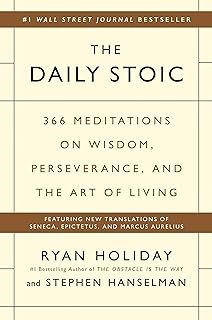I’m a big fan of Ryan Holiday. He’s an all-around brilliant guy; it doesn’t do him justice to say he’s a leading thinker on the philosophy of Stoicism. He’s so much more. As he explains: “For those of us who live our lives in the real world, there is one branch of philosophy created just for us: Stoicism. It’s a philosophy designed to make us more resilient, happier, more virtuous and more wise–and as a result, better people, better parents and better professionals. Stoicism has been a common thread though some of history’s great leaders.”
His daily Instagram posts are inspiring and ditto his daily emails.
He has a website with all sorts of resources: dailystoic.com
He’s written many books: Book Collection
He owns a bookstore, The Painted Porch, in Bastrop, Texas
Whew, it’s very humbling. That said, he just went through a momentous ‘thing.’ About a month ago he was on the campus of The Naval Academy in Annapolis about to give a lecture in an occasional series he does there….when…..an hour before going on stage his lecture was canceled.
Why? Let him tell you: https://www.youtube.com/watch?v=ZcnE1-SClfg
You may want to listen to this more than once. It’s so dense with ideas and historical and philosophical references, all of which applies so very directly to what we do as marketers and communicators.

He talks a lot about James Stockdale in this speech, which led me to look into “The Stockdale Paradox,” which was described at great length in the book Good to Great: Why Some Companies Make the Leap…And Others Don’t by Jim Collins. The “Stockdale Paradox” came from how Stockdale and his fellow aviators knew they’d have to rethink wartime code of conduct as they were being captured. Who could imagine that Stockdale would debate the nuances of communism with his captors?
The ”Paradox” is about:
Maintaining faith that you will prevail in the end
Confronting the most brutal facts of your current reality
Not becoming overwhelmed by the challenges
Remaining persistent and focused on the goal
Learning from mistakes and setbacks
Finding strength in adversity.
Even if you’re not spending time in the Hanoi Hilton, this ‘paradox’ can help navigate tough times whether it’s just you or your winery.
And now if you’re hooked on all things-Ryan Holiday, here are his previous lectures that he delivered at the Naval Academy:
In April 2023: https://www.youtube.com/watch?v=gR6l1yxpfro
And in April 2022: https://www.youtube.com/watch?v=e1lqWpqUpA8&t=25s

